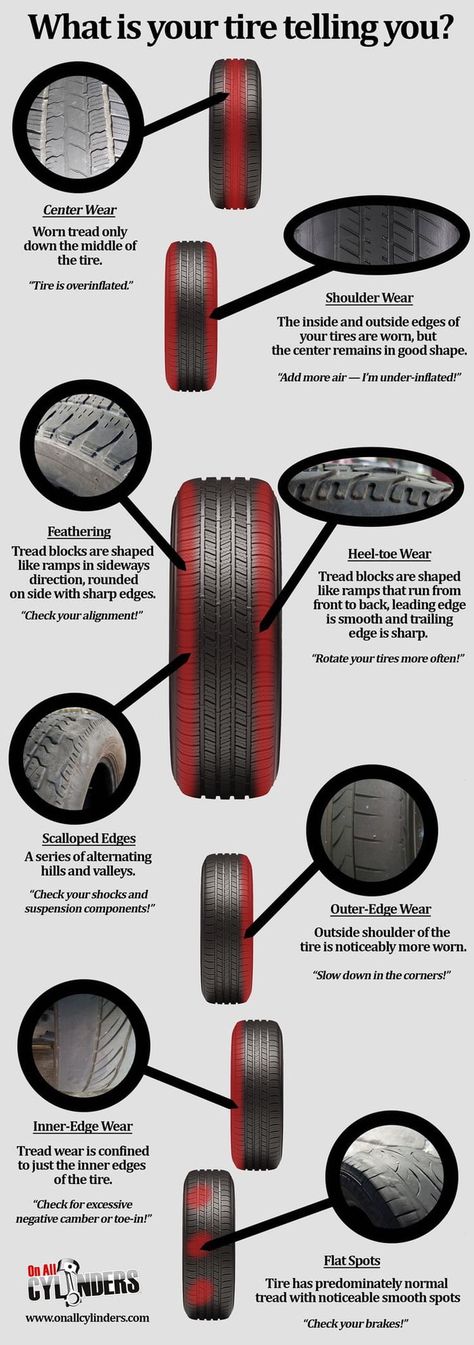Your car's tires play many valuable roles in the safety and function of your vehicle — from helping you navigate twists, turns, and stops like a pro to carrying the full weight of your car. That's why it's important to pay special attention to these essential components.
Fortunately, maintaining the proper tire pressure on your vehicle is one of the easiest yet most effective ways to care for your car tires. Learn how to check air pressure and inflate your tires with this helpful guide.
Underinflated tires can not only reduce fuel efficiency, but it can also run the risk of getting into an accident, losing proper steering control, damaging various components of your vehicle, and more. If you notice that your tire's air pressure levels have dropped, it's best to prioritize inflating them as soon as possible.
Checking your vehicle's tire pressure is a relatively simple task. You'll want to start by purchasing a tire gauge. These vary in price depending on the type you choose (i.e., digital, basic, etc.) but can usually be found for well under $40. It's also essential to keep a tire gauge on hand, as some gas station air hose gauges are not always accurate. Many modern cars and trucks also display the tire pressure for each tire on the dashboard. Once you have your tire gauge in hand, it's time to determine the proper pressure for your vehicle.
Find the correct inflation level. To do this, you can either look for the recommended pressure on the sticker within your driver's-side door jamb or consult your car owner’s manual. This is the tire pressure specification when the tires are cold, meaning not driven for a few hours.
Remove the valve stem cap from your tire. Some cars and trucks have green valve stem caps with an “N” on them - this means the tire is filled with nitrogen instead of air (air is mostly nitrogen). If your tires have these green valve stem caps, you can find some special stations that dispense nitrogen, but be aware that you can use normal air as well.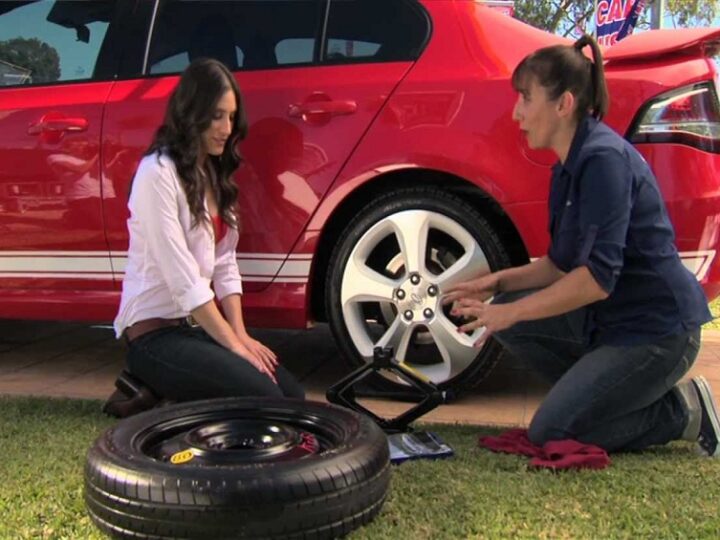 The inflation pressure specifications are the same regardless if the tire is filled with air versus nitrogen.
The inflation pressure specifications are the same regardless if the tire is filled with air versus nitrogen.
Connect your air pressure gauge to the tire’s valve stem until you receive a reading.
If the pressure level number seems unrealistic, remove the gauge and try again. This time, ensure that the indicator is connected firmly to the valve stem.
It's not always possible to tell if a tire is underinflated by giving it a quick once over. So, check your PSI levels with a gauge each month and after extreme temperature changes. You'll also want to check your pressure levels when your tires have had time to cool down since air expands within your tires while driving.
Filling your tires with air at a gas station is relatively simple. Bring your tire gauge and some spare change since some are coin-operated and are not always accurate in their pressure readings. Try to make this the first stop if you are running errands so that your tires are still relatively cool from sitting for a few hours.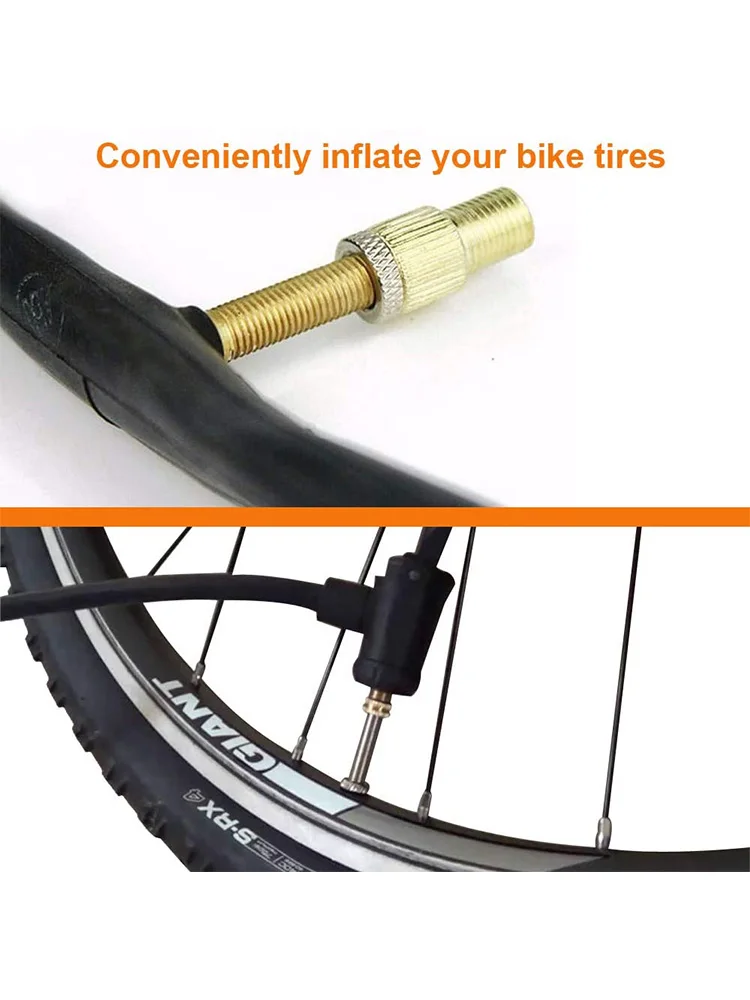 Then, follow these steps:
Then, follow these steps:

Can't find an air filling station near you or just want some help? Head to your local Firestone Complete Auto Care. We'll give you a free tire inspection and refill your tires free of charge. And if you need new tires, we've got you covered there too!
We all know that routine maintenance is important for everything from our computers to our cars. But sometimes, we fall short. One of the most neglected routine car maintenance tasks is to check tire pressures and inflate them as necessary.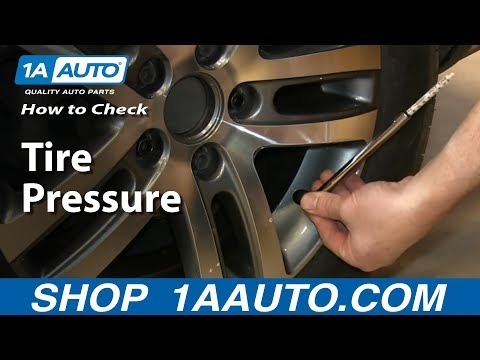 That’s why newer cars have tire pressure warning lights, or tire pressure monitoring systems (TPMS), that let you know when you have under- or over-inflated tires (when any tire is 25% underinflated).
That’s why newer cars have tire pressure warning lights, or tire pressure monitoring systems (TPMS), that let you know when you have under- or over-inflated tires (when any tire is 25% underinflated).
Older vehicles don’t have this useful warning light. So, don’t wait for a rupture to check or change a tire. Use this guide to learn how to check the pressure (PSI) of your vehicle tires and how to inflate them to the proper air level.
Why should you check your tire pressure?The number one reason why you should periodically check your tire pressure is SAFETY, but there are monetary and handling reasons as well:
Proper tire pressure (as recommended by the manufacturer) is needed to drive safely and efficiently. According to a 2009 report by the National Highway Traffic Safety Administration:
“…about 28% of light vehicles on our Nation’s roadways run with at least one underinflated tire.
Only a few psi difference from vehicle manufacturer’s recommended tire inflation pressure can affect a vehicle’s handling and stopping distance. Poor tire maintenance can increase incidences of blowouts and tread separations. Similarly, underinflation negatively affects fuel economy.”
When your tires are underinflated, the tires get fatter, increasing their surface area. This causes high heat generation and extra resistance that could result in higher fuel costs, blown out tires, tire wear, and loss of control.
If you feel like you’re spending too much at the gas pump, it might be your tires. According to the US Department of Energy:
“You can improve your gas mileage by 0.6% on average—up to 3% in some cases—by keeping your tires inflated to the proper pressure. Under-inflated tires can lower gas mileage by about 0.2% for every 1 psi drop in the average pressure of all tires.”
In addition to safety and fiscal concerns, keeping your tires properly inflated will also reduce your impact on the environment. When your tires are properly inflated, you’ll pay less for gas, replace your tires less often, and improve your handling and stopping distance. You’ll also feel better knowing that you are emitting less carbon dioxide and other harmful substances into the atmosphere.
When your tires are properly inflated, you’ll pay less for gas, replace your tires less often, and improve your handling and stopping distance. You’ll also feel better knowing that you are emitting less carbon dioxide and other harmful substances into the atmosphere.
PSI stands for pounds per square inch. The recommended PSI for your vehicle’s tires is determined by the vehicle’s manufacturer and the recommended tire size.
One big question that we get is whether you should follow the recommended PSI level on the tire itself or the recommended PSI level printed in your owner’s manual or on the placard inside of door edge, glove box door, or fuel door.
Do NOT use the max PSI that is printed on the tire sidewall. This is not the recommended PSI level. The pressure amount on the tire is normally the maximum allowed pressure. The correct PSI level is almost always less than what you see printed on the side of the tire.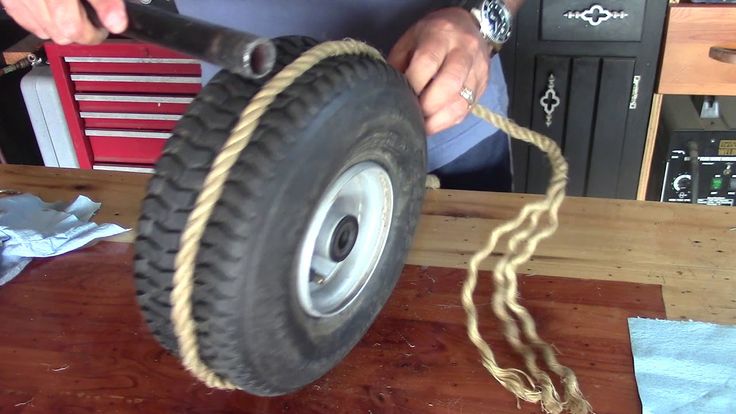 Over-inflation can lead to poor handling and comfort, overheating and blow outs. Over 40 PSI is a dangerous level for most vehicles!
Over-inflation can lead to poor handling and comfort, overheating and blow outs. Over 40 PSI is a dangerous level for most vehicles!
Make sure you always use the recommended PSI as provided in your owner’s manual and don’t go any more than 5 PSI over the recommended level. You should make sure, however, that your tires are appropriate for your vehicle. You can do this by checking the car’s owner’s manual or the placard that is on the inside of the driver-side door, glove box, or fuel door.
Most car tire pressure recommendations range from 30-35 PSI.
How often should I check tire pressure?A question in many minds is when is the appropriate time and frequency for checking and inflating vehicle tires.
A quick google search will reveal a variety of different opinions and suggestions. Some say that you should check your tire pressure every 2nd visit to the gasoline station, while others say once every 3-6 months is OK.
Most tire and vehicle manufacturers, on the other hand, will say that you should check your tire pressure at least once every month, or every second trip to the gas pump. Your tires will lose around 1 PSI each for every month that goes by.
Your tires will lose around 1 PSI each for every month that goes by.
Unfortunately, not one answer will fit every situation. There are several factors that influence how often you should check your tire pressure, including:
Did you know that for every 10°-drop in temperature, you lose 1 pound of pressure?
If you have a leaky valve or a small puncture, you will lose air pressure much more quickly. This is one more reason why you should frequently check the tire pressure on all of your tires.
Since tire pressure constantly fluctuates, it’s important to check it periodically (at least once a month) and add air as necessary.
How to Check Tire PressureFinding out the tire pressure of your tires is incredibly easy. All you need is a pressure gauge (click here for additional items you should have in your vehicle).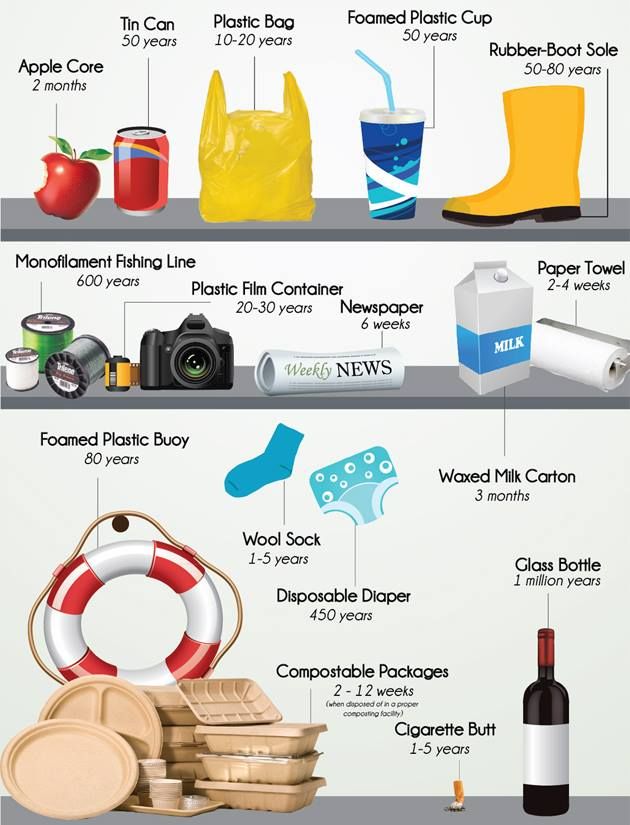
Just make sure that you are checking your tires when they are relatively cold. If you check your tire pressure after a long drive, you will get an inaccurate reading since heat will temporarily increase the tire pressure reading.
Unfortunately, not all pressures gauges are created equal. Some are better than others. We recommend shelling out a couple extra bucks for a digital reader. The pop-up, stick-type versions are notoriously inconsistent and unreliable. A reliable gauge will be well worth the investment. Prices range from about $5 for the stick-type and about $30 for the digital and dial-type pressure gauges.
You can also check your tire pressure at most gas stations or auto repair shops. Discount Tire offers free tire pressure checks and inflation.
Here are the steps for checking your tire pressure: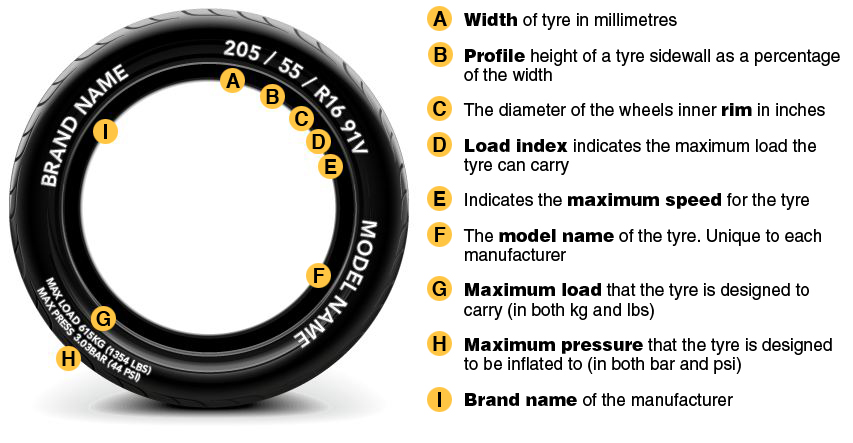
It should only take you a couple minutes to check the air pressure of your vehicle’s tires. As soon as you restore tire pressure to the recommended levels, you’ll start experiencing the safety and savings that come with this regular maintenance task.
Watch this video for more information on how to check your tire pressure:
How to Inflate TiresHere are the steps for adding air to your tires:
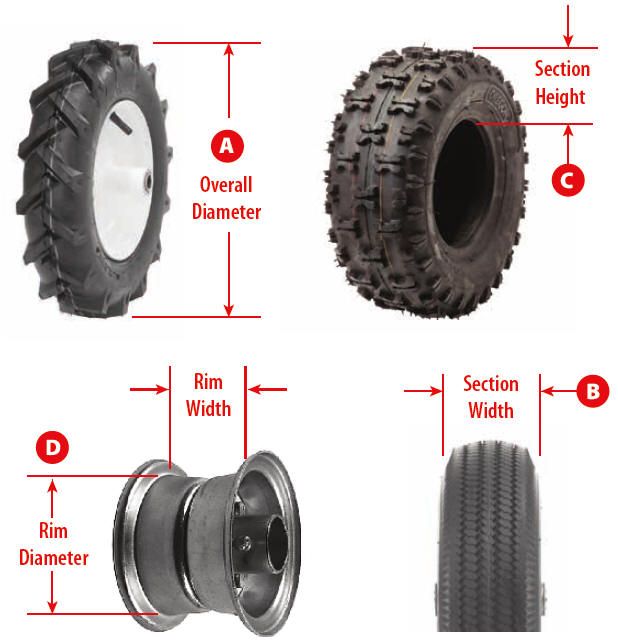 If your local gas station’s air pump doesn’t have this capability, then you will need to fill up the tire, check the pressure with your gauge, and then add or release air as necessary. Some air pumps will have a built-in tire pressure gauge. Once the PSI level is set, feed coins into the machine until you hear the air coming through. It will be pretty noisy.
If your local gas station’s air pump doesn’t have this capability, then you will need to fill up the tire, check the pressure with your gauge, and then add or release air as necessary. Some air pumps will have a built-in tire pressure gauge. Once the PSI level is set, feed coins into the machine until you hear the air coming through. It will be pretty noisy.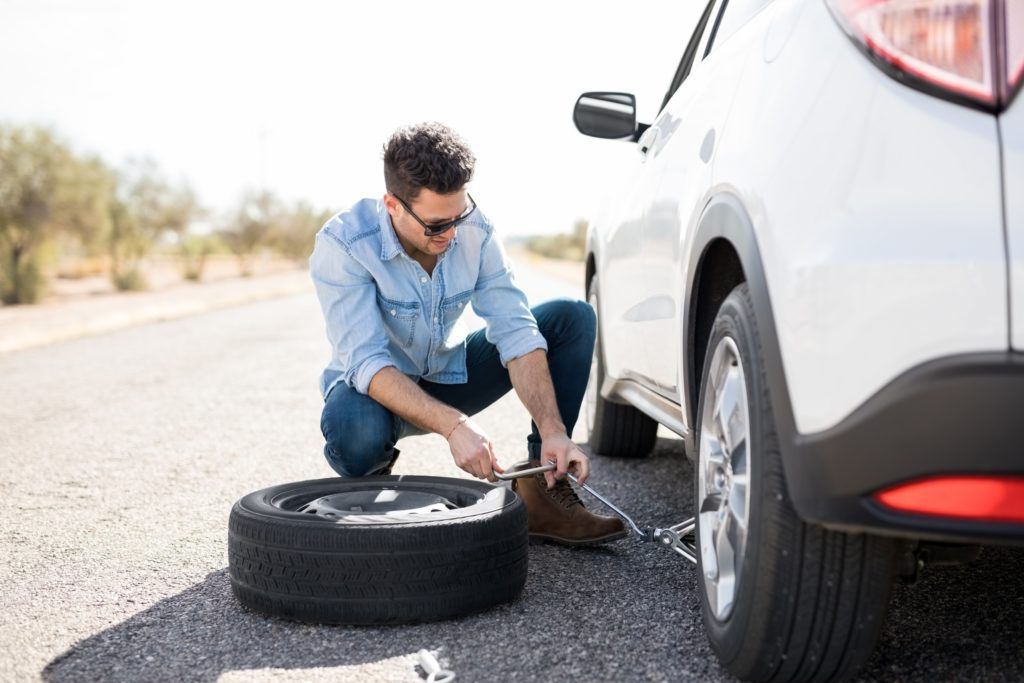 Check the air pressure as you go and refill or release air as necessary.
Check the air pressure as you go and refill or release air as necessary.Remember, just one drop in PSI can lower your gas mileage by about 0.2%. For every 3-4 PSI units that your tire is underinflated, you are burning around 1% more fuel.
If your tires are flat, then you probably have a leak. Add air and see if you can drive around without the pressure dropping. If you hear air escaping the tire while you are filling up, then it’s time to replace the tire.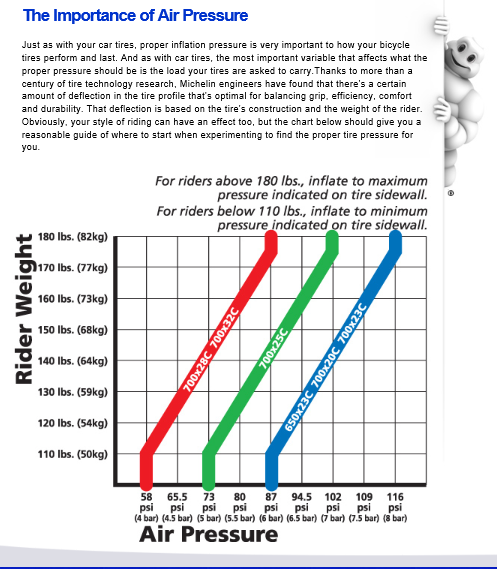
Tip: Learn how to use the air pump properly first. Some automatic air pumps at gas stations have a handle/switch that you need to depress in order for the air to flow. When you let go of the handle, a tire pressure gauge will pop out showing you the tire pressure. At the same time, air will be slowly released. If your air pump has this kind of handle, then you will want to hold down the handle for most of the time, periodically releasing it to check the pressure reading. Consult your own tire pressure gauge for accuracy.
When should I replace my tires?If you check your tire pressure at least once a month as recommended, you’ll also get a good idea of the general condition of your tires and when you should replace them.
We recommend using the penny test:
Source: bridgestonetire.com
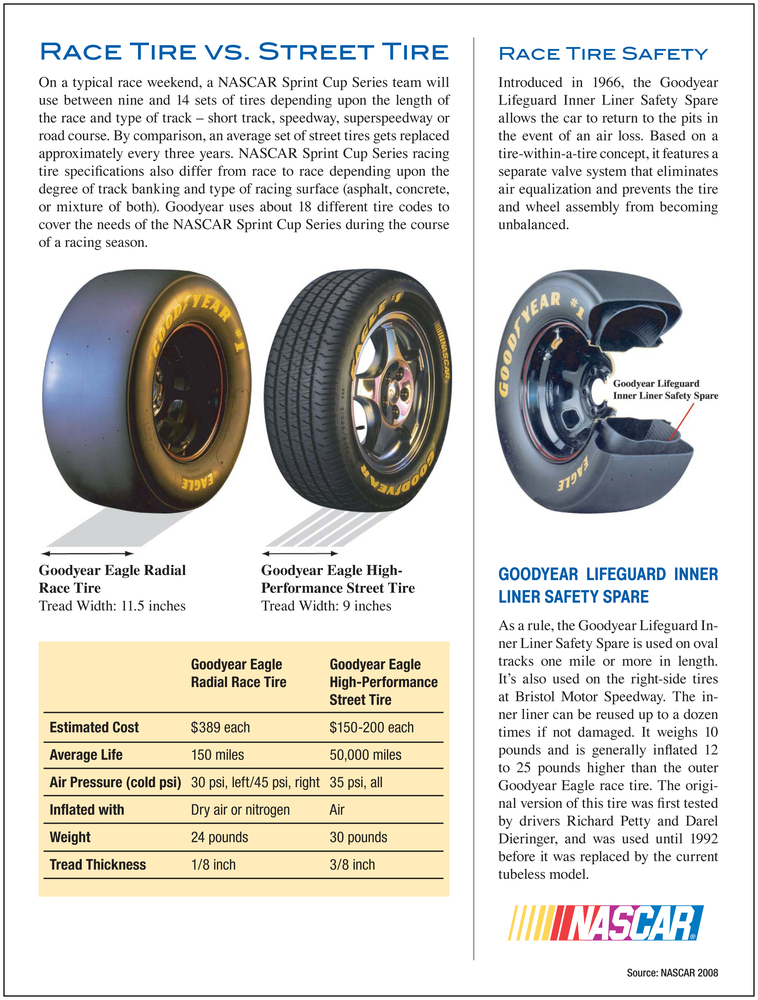
Click here for more car maintenance tips. Click here for car winterization tips.
Auto Simple wants you to find a vehicle you love at a price you can afford. We carry a large selection of hand-picked, Certified Pre-Owned vehicles, all with a 6 month/6,000-mile Powertrain Warranty.
If you have any questions, don’t hesitate to speak with one of our Online Specialists or give us a call:
Chattanooga, TN – (423) 551-3600
Cleveland, TN – (423) 476-4600
Dayton, TN – (423) 775-4600
Dalton, GA – (706) 217-CARS (2277)
Follow us on social media for more useful information on buying, selling, and maintaining vehicles: Facebook, Twitter, Youtube, and Google+.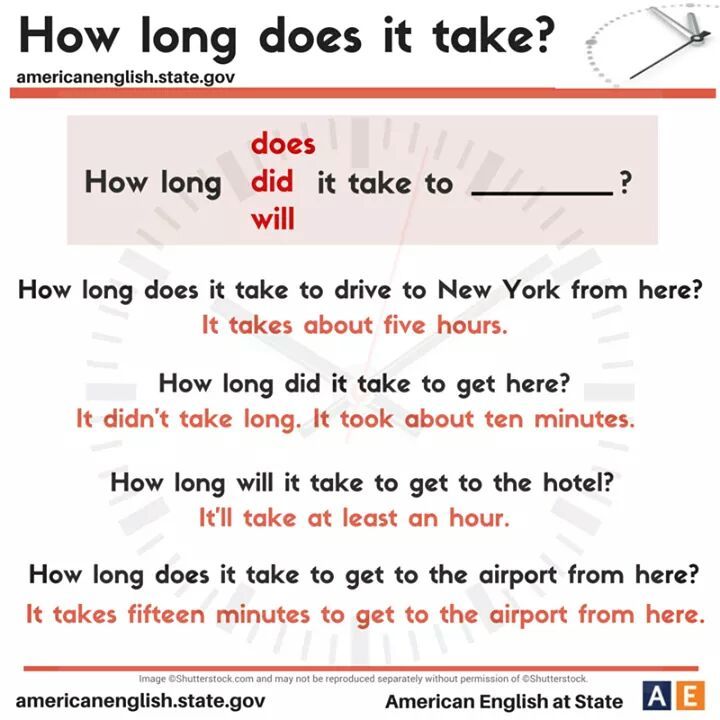
If a car tire is under-inflated by even 20%, tire life is reduced by about a third. What if the pressure is even lower? Here we can already talk about the catastrophic destruction of the tire. And under certain circumstances, the wheel can "shoot" or disassemble - if the speed is high, the car becomes uncontrollable. How often do you check the pressure in your car tires?
Tire manufacturers recommend checking the tire pressure every two weeks (every 2000 km for intensive runs). Because air, albeit gradually, but leaves the wheel - tire materials are not absolutely tight. Tire damage, valve leaks, etc. can be additional aggravating factors. Therefore, the pressure in the wheel is reduced. In addition, it would be useful to pick up a pressure gauge before a long trip, especially if you have to drive along highways. nine0003
Please note that the lower the temperature, the lower the tire pressure.
An even more important question - where to check? We are used to using the services of tire shops or a free compressor at some gas stations. But do they take into account that during the trip the tires heat up, and the pressure in them increases?
But do they take into account that during the trip the tires heat up, and the pressure in them increases?
By the time you get to the tire shop, the tires will warm up and you will have to take this into account. How - no one will say for sure (depending on traffic conditions and weather conditions, as well as a number of other factors, the data can "dance" within a few tenths of an atmosphere). Therefore, checking and adjusting the pressure of "hot" tires is strongly discouraged. Measurements should be taken "cold", that is, before the trip, while the tires have not yet warmed up, or after a long parking (not earlier than an hour after stopping). Therefore, it is better to do it all the same in the old fashioned way: with your pressure gauge before leaving the yard. nine0003
Whatever all of the above is not purely theoretical, we carried out a series of measurements. First, we tested the theory about "cold" and "hot" tires (see table 1 ). On the street - minus 11 C, the car just after the night "hibernation". Three control measurements, and we make sure: the pressure is only 1.8 atmospheres instead of the recommended 2.0 atmospheres. Let's pump up the wheel later - it is important for us to find out how much the pressure gauge readings will change after the car has been on the road for some time. nine0003
Three control measurements, and we make sure: the pressure is only 1.8 atmospheres instead of the recommended 2.0 atmospheres. Let's pump up the wheel later - it is important for us to find out how much the pressure gauge readings will change after the car has been on the road for some time. nine0003
| Tire condition | ambient air t | Pressure |
| "Cold" | nine0023 1.8 bar | |
| "Hot" | -10 C | 1. |
City driving hour,
20 km behind - this is enough for the wheels to warm up. The next series of measurements gives a new result - 1.9 atm. The difference between the "cold" and "hot" checks was only 0.1 atmospheres, but, firstly, the ambient temperature was not high, and secondly, there was a measured ride, during which the tachometer needle rarely exceeded
60 km/h Dynamic driving, driving at high speed, especially when the surface temperature is much above zero - all this will lead to the fact that the run-up will be much greater. By the way, changing tire pressure while driving is just the "evil" that you have to deal with in the world of motorsport. After all, the entire potential of the car, ultimately, depends on the contact of the wheels with the road, but what it will be like is just a matter of correctly set pressure. Naturally, it is selected taking into account a number of factors, including the predicted heating of tires. nine0067 But that is sports, but for civilian driving there are rules. And they are as follows: the pressure is set in accordance with the manufacturer's recommendations - at the set value and at the moment when the tires are "cold".
Naturally, it is selected taking into account a number of factors, including the predicted heating of tires. nine0067 But that is sports, but for civilian driving there are rules. And they are as follows: the pressure is set in accordance with the manufacturer's recommendations - at the set value and at the moment when the tires are "cold".
But what about the dependence of readings on ambient temperature? We placed the same wheel in three different climatic conditions (see table 2 ). First, it spent 12 hours in a warm box at an air temperature of 18 C - the pressure was 2.2 atm. Then another 12 in a cold box at an air temperature of minus 3 C. The pressure dropped by 0.05 atm - up to 2.15 atm. A little? Well, now one night in the trunk of a car, where minus 12 C was observed by morning. The pressure dropped to 1.95 atm - compared to the original value, it decreased by 0.25 atm!
| Wheel storage | t ambient air | Pressure |
| nine0024 Warm box | 18 C | 2.2 bar |
| Cold box | - 3 C | 2.15 bar nine0026 |
| Street | - 12 C | 1. |
The data obtained confirms the theory that when the ambient temperature fluctuates slightly, no pressure correction is required. But when the jump is more significant (for example, in our case it was 30 C), the difference will be much more significant (again, in our case it was more than 10% of the original value). But getting such a run is not so difficult: take a “warm” wheel from a heated garage, set the pressure, then install it on a car that drives on winter roads - here you have a difference of several tens of degrees ...
Properly set pressure not only contributes to the maximum life of tires, but also ensures comfortable and safe movement by car, allows you to most effectively use all its technical potential.
Inflated tires make the car react more sharply, help to reduce fuel consumption (after all, rolling resistance is reduced). But at the same time, the car goes through all the bumps harder - both driving comfort and suspension resource suffer.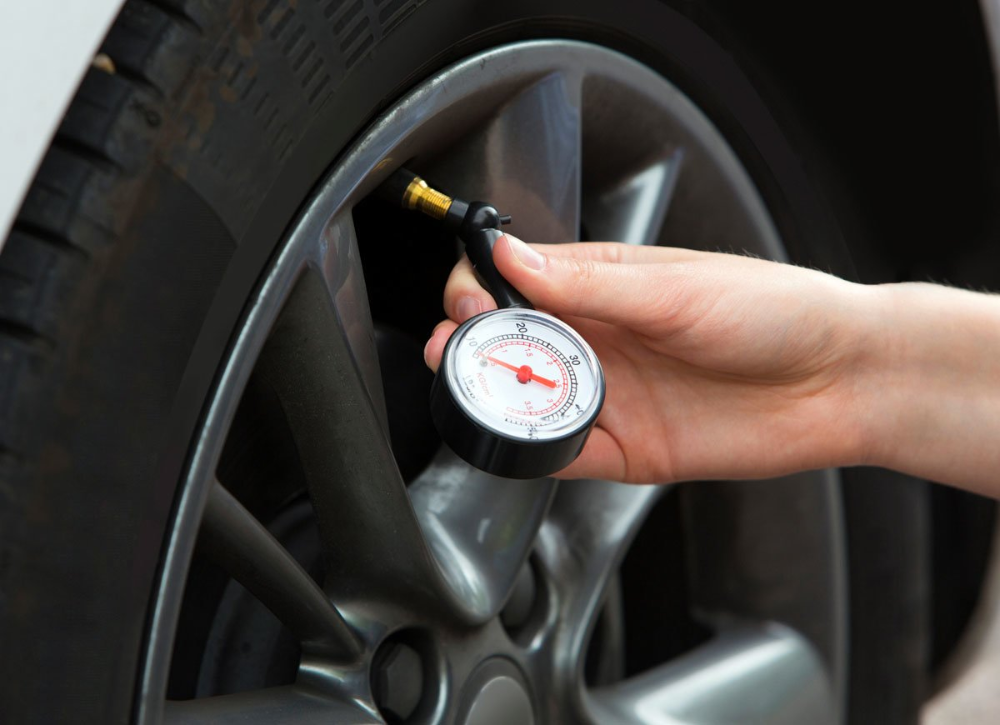 In addition, the tire itself wears out unevenly - the middle part of the tread tread is "erased" faster. nine0003
In addition, the tire itself wears out unevenly - the middle part of the tread tread is "erased" faster. nine0003
Insufficient pressure causes increased tire deformation, heating, which leads to accelerated wear or destruction. Rolling resistance increases, resulting in increased fuel consumption. Handling deteriorates, there is a risk of slipping of the tire relative to the rim, and the likelihood of a tire “breaking” in a sharp turn increases, as a result of which contact of the rim with the road is possible, which is already fraught with a coup. Naturally, all this is a consequence of extremely low pressure, which, as a rule, rarely reaches. Usually, even the most "lazy" owners get off with only increased fuel consumption and accelerated tire wear. nine0067 But sometimes low blood pressure is good. Indeed, in this case, the contact patch with the road increases - this quality can be used when driving off-road on soft ground. But then, having driven onto a paved road, it is necessary to pump up the tires to the required pressure value.
It is believed that the condition of the tires can be determined with what pressure they were used. Uniform wear indicates that the pressure was normal or close to the recommended values. A worn out middle part of the tread is a sign that the owner preferred to pump the tires, but with reduced pressure, the side parts of the tread suffer more. nine0067 For each model, the automaker recommends its own tire pressure values, and they can be individual for each modification or depend on the tire size. It should also be noted that the tire pressure on the front and rear axles may differ. Often, the automaker indicates two values: for a car with a partial load (with a driver and a passenger) and with a full one - in the second case, the pressure should be increased by 0.2-0.3 atm (the second value is also recommended for long trips at high speeds). The manufacturer's data is indicated in the operating instructions, as well as in the car itself - usually an information plate is placed on the inside of the gas tank hatch or in the doorway on the driver's side (on the central pillar or on the end of the door). nine0067 At the very least, many motorists still follow the "main" wheels, but the spare one, as a rule, is left without attention, and when the X-hour comes, the "spare wheel" is usually empty. Therefore, it is recommended not only to periodically check the pressure in the fifth wheel, but also to pump it by about 0.3 atm - in reserve.
nine0067 At the very least, many motorists still follow the "main" wheels, but the spare one, as a rule, is left without attention, and when the X-hour comes, the "spare wheel" is usually empty. Therefore, it is recommended not only to periodically check the pressure in the fifth wheel, but also to pump it by about 0.3 atm - in reserve.
P. S. The behavior of the car on the road largely depends on the correct tire pressure. We told you how to do this, although it could be easier to say: follow the manufacturer's recommendations. And do not be lazy to check the wheels from time to time, because this is the key to your safety. nine0003
Car tire is responsible for driving safety and comfort. It needs to be kept in working order. This is a prerequisite for long and safe operation. Not all drivers know how to pump up a wheel, we will analyze the nuances of this work in more detail.
Tire pressure is an important parameter, it is he who is responsible for the main technical characteristics of the wheel. The car manufacturer calculates this parameter in advance and indicates it in the recommendations. nine0003
If a tire is underinflated, this will lead to increased fuel consumption in the first place. This is due to a decrease in the rolling coefficient. Uneven grip with the road surface also occurs, leading to a decrease in traffic safety, this is felt in the form of more difficult driving. Tire wear increases, with a strong drop in pressure, the rim of the disc can cut the sidewall.
It is also not worth pumping tires. The tire will wear unevenly, the middle part of the tread will suffer. Increased pressure can provoke an explosion and complete destruction of the tire on the road. In addition, the stiffness of the wheel will increase, and the braking efficiency will decrease. nine0003
nine0003
Pressure checks must be carried out at least once a month. If there are sudden changes in temperature outside, it is necessary to check the parameter every two weeks. Be sure to check the pressure before every long trip.
Visually inspect tires in the morning. If there are doubts about the quality of the pump, it is worth checking the pressure, if necessary, pump up the tire. Checking and pumping should be carried out on all wheels, different tire pressures can lead to loss of vehicle controllability. nine0003
Be sure to check the condition of the spare wheel.
Tire pressure is determined by the car manufacturer, he finds out through tests to what extent the rubber can be inflated. The data must be indicated in the documents for the vehicle.
For greater simplicity, additionally indicate the parameters on the plate. It can be found on the A-pillar of the car or on the inside of the gas filler flap. In rare cases, a plate with the main technical parameters may be on the door. It remains to find a plate on your car and see to what pressure to pump tires. nine0003
It can be found on the A-pillar of the car or on the inside of the gas filler flap. In rare cases, a plate with the main technical parameters may be on the door. It remains to find a plate on your car and see to what pressure to pump tires. nine0003
There are certain pumping rules. They include not only data on how much air to pump into the tire, but also when to do it. The main requirement is to inflate the tire only after a long parking. The tire heats up while driving. According to physical laws, temperature directly affects gas pressure. Accordingly, immediately after the stop, the indicator will not be accurate.
It is necessary to wait until the temperature of the air in the tire is equal to the outside. It takes 3-4 hours for this. After waiting so long, you can accurately measure the pressure. It is most convenient to do pressure measurement and pumping in the morning, after overnight parking. nine0003
Inflating a car tire is not difficult, but a beginner may have a few questions.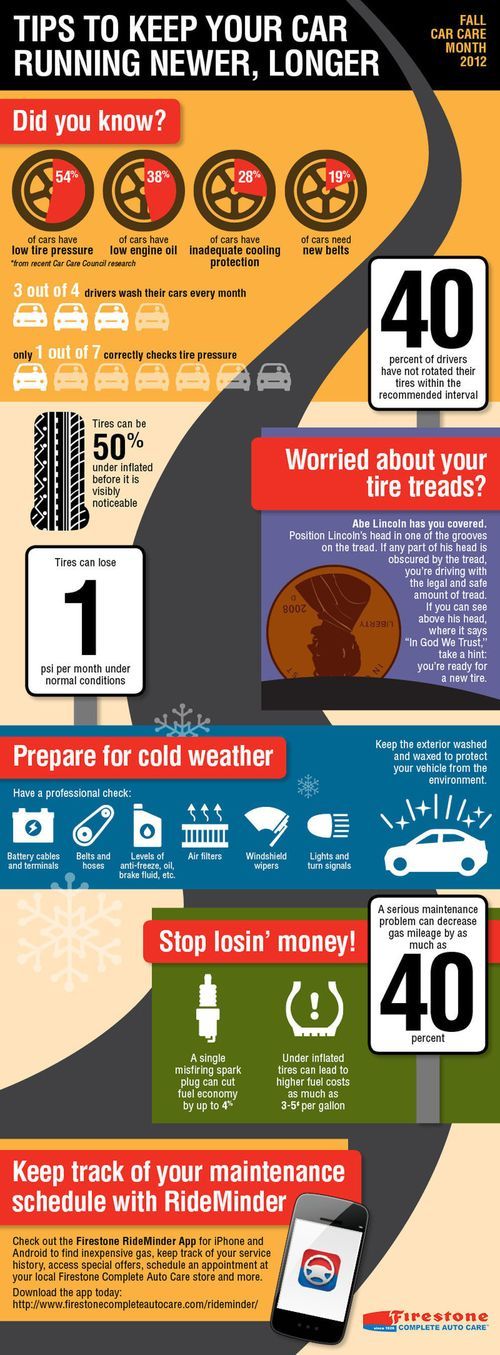 We will analyze the stages of the process, in the end you will know how to properly pump up the wheel. To work, you will need a pump, you can use a foot or compressor. Now there are compressors that run on the cigarette lighter. If the pump does not have a pressure gauge, this device will also be needed.
We will analyze the stages of the process, in the end you will know how to properly pump up the wheel. To work, you will need a pump, you can use a foot or compressor. Now there are compressors that run on the cigarette lighter. If the pump does not have a pressure gauge, this device will also be needed.
Let's walk through how to inflate a tubeless tire step by step. nine0003
